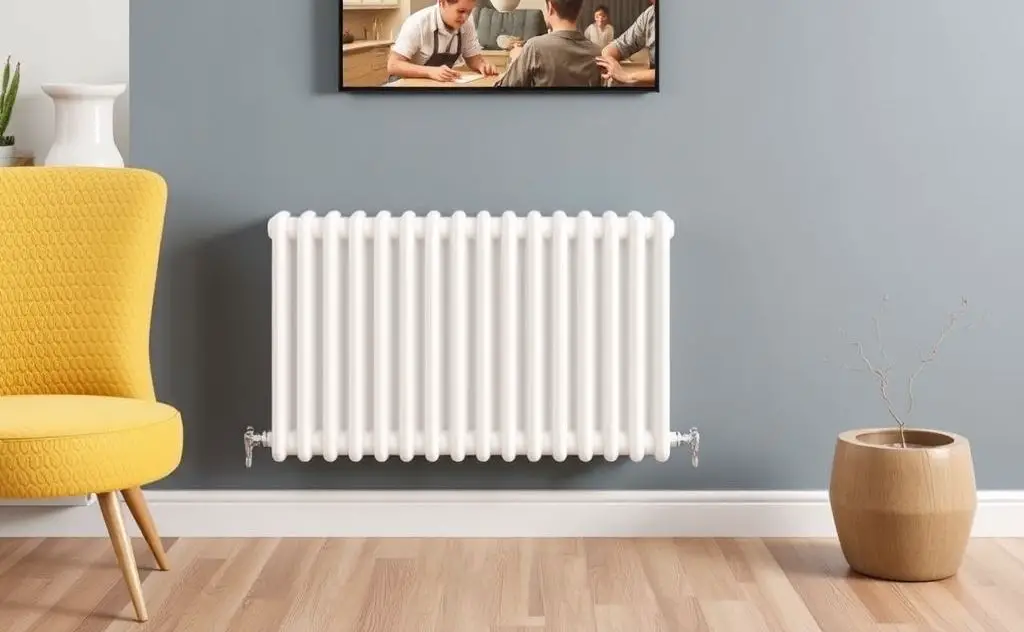To choose the right size of hydronic radiators for your home, calculate the room’s heat loss and match it to the radiator’s output capacity for optimal efficiency.
Selecting the right size hydronic radiators ensures efficient heating and comfort. Undersized units won’t heat properly, while oversized ones waste energy. This guide covers everything from BTU calculations to professional installation tips.

Understanding Hydronic Radiator Sizing Basics
Hydronic radiators use hot water to heat spaces. Their size depends on heat output (BTUs) and room dimensions. Proper sizing balances warmth with energy efficiency.
Key Factors Affecting Radiator Size
- Room square footage
- Ceiling height
- Window size and quality
- Insulation levels
- Climate zone

Calculating Your Heating Needs
Follow these steps to determine the right radiator size:
1. Measure Room Dimensions
Calculate square footage by multiplying length by width. For example, a 12×15 ft room equals 180 sq ft.
2. Determine BTU Requirements
Use this formula:
| Room Type | BTUs per Sq Ft |
|---|---|
| Well-insulated room | 30-35 BTUs |
| Average insulation | 35-40 BTUs |
| Poor insulation | 40-45 BTUs |
For our 180 sq ft example with average insulation: 180 x 37.5 = 6,750 BTUs needed.
3. Select Radiator Output
Check manufacturer specs for BTU output per section or length. Most hydronic radiators produce 500-1,500 BTUs per linear foot depending on water temperature.
Advanced Sizing Considerations
Window Placement
Radiators work best under windows where heat loss occurs. Add 10-15% more capacity for rooms with large windows.
Ceiling Height
For ceilings over 8 feet, multiply BTU requirement by 1.25 for every additional foot.
Room Usage
Bathrooms and kitchens may need less heating due to existing heat sources. Bedrooms often require precise temperature control.
Professional Installation Tips
While DIY is possible, licensed plumbers ensure proper sizing and installation. They consider:
- Pipe sizing and water flow rates
- Boiler capacity matching
- Balancing multiple radiators
- Pressure testing
According to Energy.gov, proper system balancing can improve efficiency by 10-15%.
Common Sizing Mistakes to Avoid
Oversizing Radiators
Too large radiators cause short cycling, reducing efficiency and comfort. They may also require higher water temperatures.
Ignoring Heat Loss
Older homes with poor insulation may need 20-30% more heating capacity than modern buildings.
Forgetting Future Needs
Consider potential renovations or additions when sizing your system. Wall-mounted hydronic units offer flexibility for changes.
Special Cases and Solutions
Historic Homes
Older buildings often need taller radiators to match original designs. Look for retrofit solutions that maintain aesthetics.
Small Spaces
For tight areas, consider vertical radiators or low-profile baseboard models that provide adequate heat in minimal space.
Whole-House Systems
For whole-home hydronic heating, calculate each room separately then verify total load against boiler capacity.
Maintenance for Optimal Performance
Properly sized radiators work best when maintained:
- Bleed air from system annually
- Check for leaks or cold spots
- Clean fins and surfaces regularly
- Monitor boiler pressure
Remember that radiator sizing involves both science and art. While calculations provide a starting point, real-world factors like furniture placement and personal comfort preferences also matter. When in doubt, consult a heating professional to ensure your hydronic system delivers efficient, comfortable warmth for years to come.

